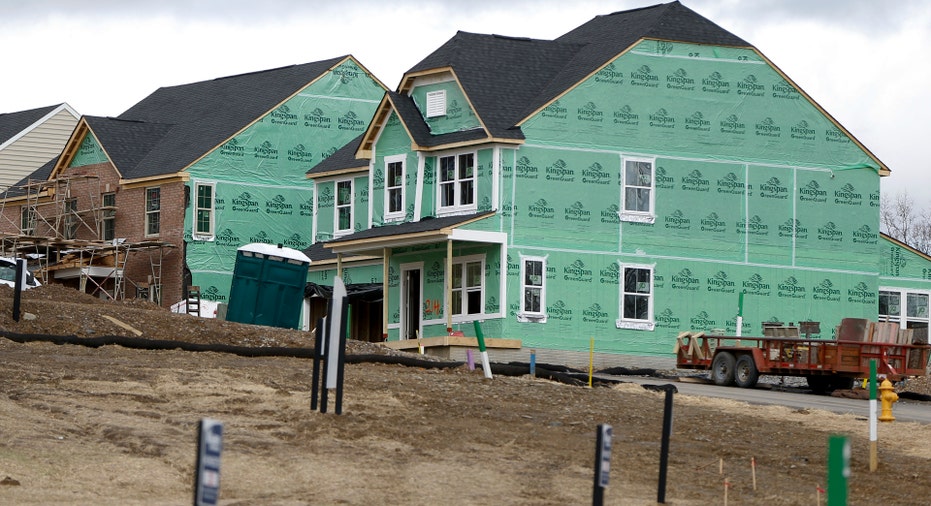Home construction crisis: Why builders aren’t building

In this Wednesday, March 1, 2017, photo, new home construction is underway in a housing plan in Zelienople, Pa. The National Association of Home Builders/Wells Fargo releases its January index of builder sentiment, Wednesday, Jan. 17, 2018. (AP Photo (AP)
A decade after a construction bubble produced a massive amount of excess housing supply and helped to precipitate the financial crisis, Americans now face with the opposite problem: a shortage of homes.
It’s a crisis – especially in the lower price-point housing market – that’s not expected to go away anytime soon, experts say.
Home construction per household is near its lowest level in 60 years, according to the Kansas City Fed, as reported by The Wall Street Journal. The National Association of Home Builders predicts there will be fewer than 900,000 new home starts this year, even though the market could easily absorb 1.2 million to 1.3 million, indicating yet another year of underbuilding.
“I think we can expect that inventory of single-family homes will continue to be tight. Prices will continue to go up,” Robert Dietz, chief economist at the National Association of Home Builders, told FOX Business.
Here’s a look at the various factors that are contributing to both diminished supply and builder incentives.
The post-financial crisis era
In the aftermath of the Great Recession multi-family construction was the first part of the market to recover, Dietz noted. However, single-family construction did not follow, and the types of homes being built began to change.
After the crash in 2007-2008, it was easier for wealthy buyers to qualify for mortgages and it was also easier for builders to pass increased costs along to these individuals. Therefore, the homes that were built catered to this demographic, and were large and expensive.
In the years that followed, the Obama administration began to implement a series of regulations that affected builders. From environmental policies to land use and labor policies, Dietz noted that there has been a definitive increase in the regulatory burden for homebuilders and contractors throughout recent years. Dodd-Frank, which aimed to protect taxpayers from another crisis, also made it harder for contractors to get loans from smaller financial institutions.
The NAHB estimates that regulatory costs increased 29% between 2011 and 2016.
These regulations have not only increased costs, but slowed permitting processes.
Complicating factors
The Trump administration has enacted a number of tariffs that have deterred builders from constructing affordable, single-family homes. From the duties imposed on Canadian softwood lumber, a big source of material for U.S. homebuilders, to the more recently announced steel and aluminum tariffs, higher costs have weighed heavy on the industry.
“The only thing that makes sense with higher material costs is higher-end [price points],” Lawrence Yun, chief economist and senior vice president of research at the National Association of Realtors (NAR), told FOX Business.
Interest rates are also on the rise as the Federal Reserve continues on the path toward monetary policy normalization. That means mortgage rates will also increase, making the situation especially challenging for buyers who are on the precipice of being able to afford a home.
Why it won’t improve in the near-term
The construction industry is suffering from a shortage of workers, potentially facing a 1.5 million shortfall in personnel by 2020. That is restricting the number and type of jobs that companies are willing to take on.
Despite an improving economic picture, diminished inventory means home prices are still rising faster than income.
Also complicating the inventory picture is the fact that following the housing bubble burst, a lot of real estate investors jumped in and bought up properties at lower entry points, Yun said. Many of these investors are still sitting on those properties.
While both Dietz and Yun agree there are some steps that can be taken in the near-term to alleviate some of these damaging factors, the inventory crunch is unlikely to resolve in the near future.



















